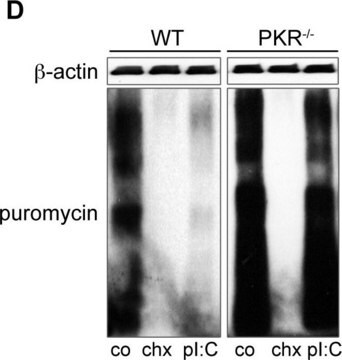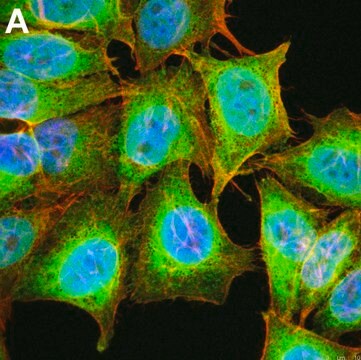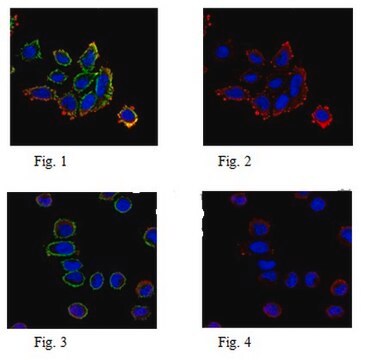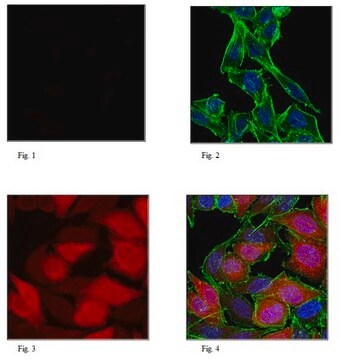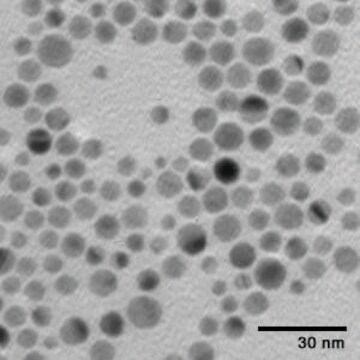AB3258
Anti-Puromycin Sensitive Aminopeptidase Antibody
Chemicon®, from goat
Sign Into View Organizational & Contract Pricing
All Photos(1)
About This Item
UNSPSC Code:
12352203
eCl@ss:
32160702
NACRES:
NA.41
Recommended Products
biological source
goat
Quality Level
antibody form
purified immunoglobulin
antibody product type
primary antibodies
clone
polyclonal
species reactivity
rat, mouse
manufacturer/tradename
Chemicon®
technique(s)
immunocytochemistry: suitable
western blot: suitable
NCBI accession no.
UniProt accession no.
shipped in
dry ice
target post-translational modification
unmodified
Gene Information
human ... NPEPPS(9520)
Specificity
Recognizes puromycin sensitive aminopeptidase.
SPECIES REACTIVITIES: It is expected that the antibody may react with other species. Reactivity with other species has not been confirmed.
SPECIES REACTIVITIES: It is expected that the antibody may react with other species. Reactivity with other species has not been confirmed.
Immunogen
Rat puromycin sensitive aminopeptidase.
Application
Research Category
Metabolism
Metabolism
Research Sub Category
Enzymes & Biochemistry
Enzymes & Biochemistry
This Anti-Puromycin Sensitive Aminopeptidase Antibody is validated for use in WB, IC for the detection of Puromycin Sensitive Aminopeptidase.
Western blot: 1:1,000
Immunocytochemistry: 1:1,000
Optimal working dilutions must be determined by the end user.
Immunocytochemistry: 1:1,000
Optimal working dilutions must be determined by the end user.
Physical form
Format: Purified
Purified immunoglobulin. Liquid in phosphate buffered saline.
Storage and Stability
Maintain at -20°C in undiluted aliquots for up to 6 months. Avoid repeated freeze/thaw cycles.
During shipment, small volumes of product will occasionally become entrapped in the seal of the product vial. For products with volumes of 200 μL or less, we recommend gently tapping the vial on a hard surface or briefly centrifuging the vial in a tabletop centrifuge to dislodge any liquid in the container′s cap.
During shipment, small volumes of product will occasionally become entrapped in the seal of the product vial. For products with volumes of 200 μL or less, we recommend gently tapping the vial on a hard surface or briefly centrifuging the vial in a tabletop centrifuge to dislodge any liquid in the container′s cap.
Legal Information
CHEMICON is a registered trademark of Merck KGaA, Darmstadt, Germany
Disclaimer
Unless otherwise stated in our catalog or other company documentation accompanying the product(s), our products are intended for research use only and are not to be used for any other purpose, which includes but is not limited to, unauthorized commercial uses, in vitro diagnostic uses, ex vivo or in vivo therapeutic uses or any type of consumption or application to humans or animals.
Not finding the right product?
Try our Product Selector Tool.
Storage Class Code
12 - Non Combustible Liquids
WGK
WGK 2
Flash Point(F)
Not applicable
Flash Point(C)
Not applicable
Certificates of Analysis (COA)
Search for Certificates of Analysis (COA) by entering the products Lot/Batch Number. Lot and Batch Numbers can be found on a product’s label following the words ‘Lot’ or ‘Batch’.
Already Own This Product?
Find documentation for the products that you have recently purchased in the Document Library.
S McLellan et al.
Journal of neurochemistry, 51(5), 1552-1559 (1988-11-01)
An antiserum generated to the soluble form of the rat brain puromycin-sensitive enkephalin-degrading aminopeptidase was used to determine the tissue distribution of the soluble and membrane-associated forms of this enzyme. All tissues examined contained significant levels of the soluble enzyme
Soma Sengupta et al.
Biochemistry, 45(50), 15111-15119 (2006-12-13)
Tau, a microtubule associated protein, aggregates into intracellular paired helical filaments (PHFs) by an unknown mechanism in Alzheimer's disease (AD) and other tauopathies. A contributing factor may be a failure to metabolize free cytosolic tau within the neuron. The buildup
Helena R Zimmermann et al.
Journal of neurochemistry, 146(2), 133-144 (2018-01-18)
Characterization of the molecular signaling pathways underlying protein synthesis-dependent forms of synaptic plasticity, such as late long-term potentiation (L-LTP), can provide insights not only into memory expression/maintenance under physiological conditions but also potential mechanisms associated with the pathogenesis of memory
Helena R Zimmermann et al.
The Journal of clinical investigation, 130(7), 3511-3527 (2020-03-28)
AMPK is a key regulator at the molecular level for maintaining energy metabolism homeostasis. Mammalian AMPK is a heterotrimeric complex, and its catalytic α subunit exists in 2 isoforms: AMPKα1 and AMPKα2. Recent studies suggest a role of AMPKα overactivation
Our team of scientists has experience in all areas of research including Life Science, Material Science, Chemical Synthesis, Chromatography, Analytical and many others.
Contact Technical Service